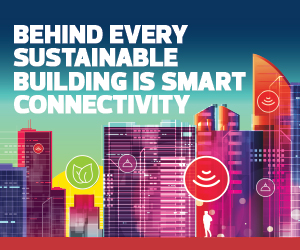Sensors and Connected Systems Yield Valuable Data on Energy Usage
Columbia University’s Center for Buildings, Infrastructure and Public Space identifies lighting, windows, chillers and boilers, building management systems, and renewable energy sources as key measurables for building efficiency. When organizations pair these systems with networked sensors, they can support occupancy-based energy consumption that adapts to real-time usage patterns.
For example, sensors connected by smart networks to lighting and heating, ventilation and air conditioning (HVAC) equipment could detect when employees enter an empty conference room so that lights and air turn on only when needed.
“That can have a huge impact on the hospital’s energy use,” says Tim Carr, a senior engineering consultant with Efficiency Vermont. “We often see, when a building automation system is added, an average of 5 to 15 percent of total energy savings, so it’s not insignificant.”
Occupancy-based usage is also a baseline capability, Carr notes. Healthcare organizations can increase their energy efficiency by layering other networked capabilities onto a building automation system, such as making a hospital grid interactive to automatically adjust internal temperatures based on electricity pricing, grid load and other factors.
One of the most significant advantages of smart buildings is that they make it easier for organizations to obtain granular visibility into their energy usage, which can otherwise be a challenge.
When Efficiency Vermont works with organizations to analyze their consumption patterns, smart meters often reveal information that hospital leadership weren’t aware of, says former Engineering Manager Abiodun Iwayemi.
“Sometimes, what they think is going on and what’s actually happening are two different things,” he says.












